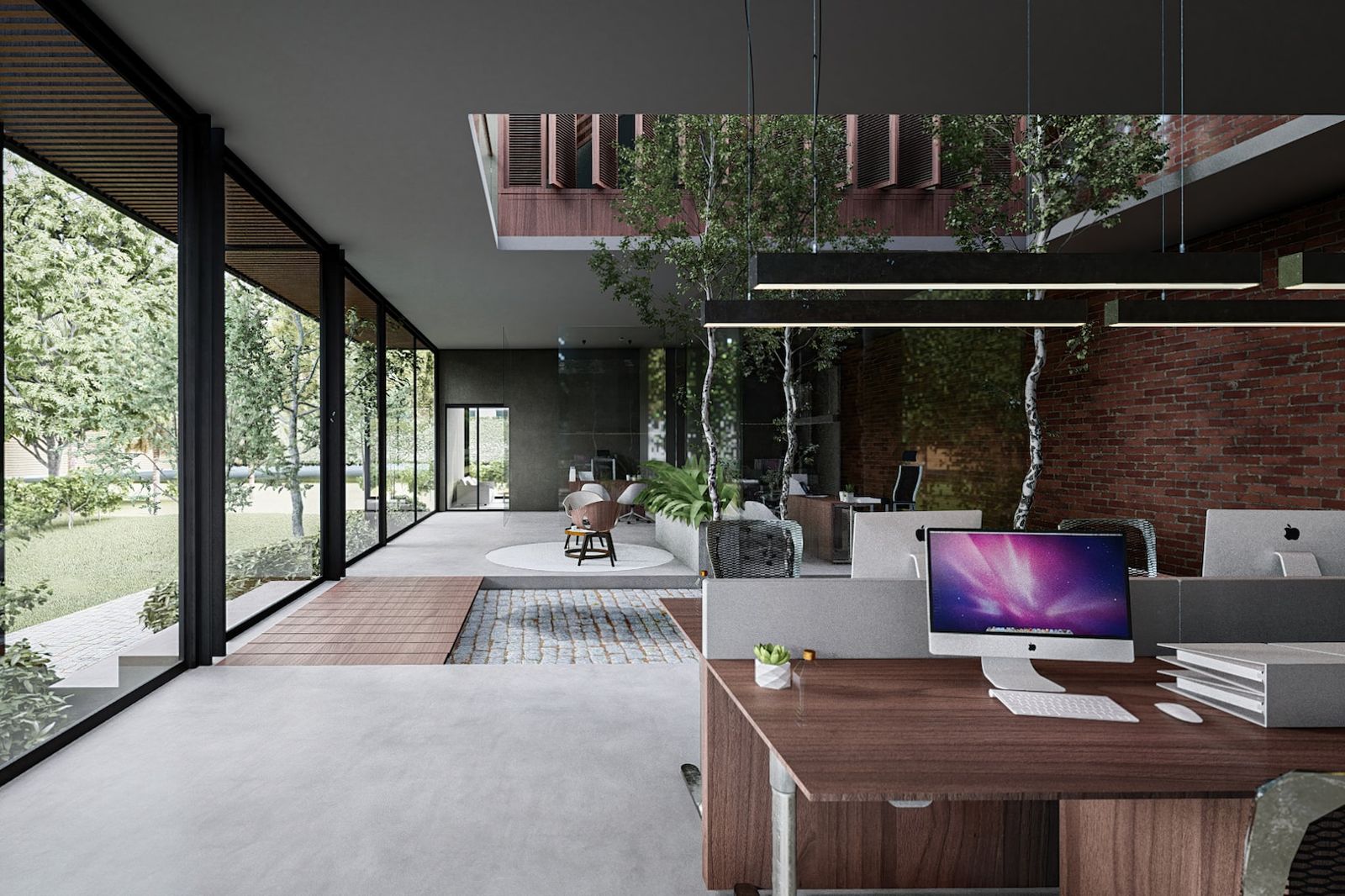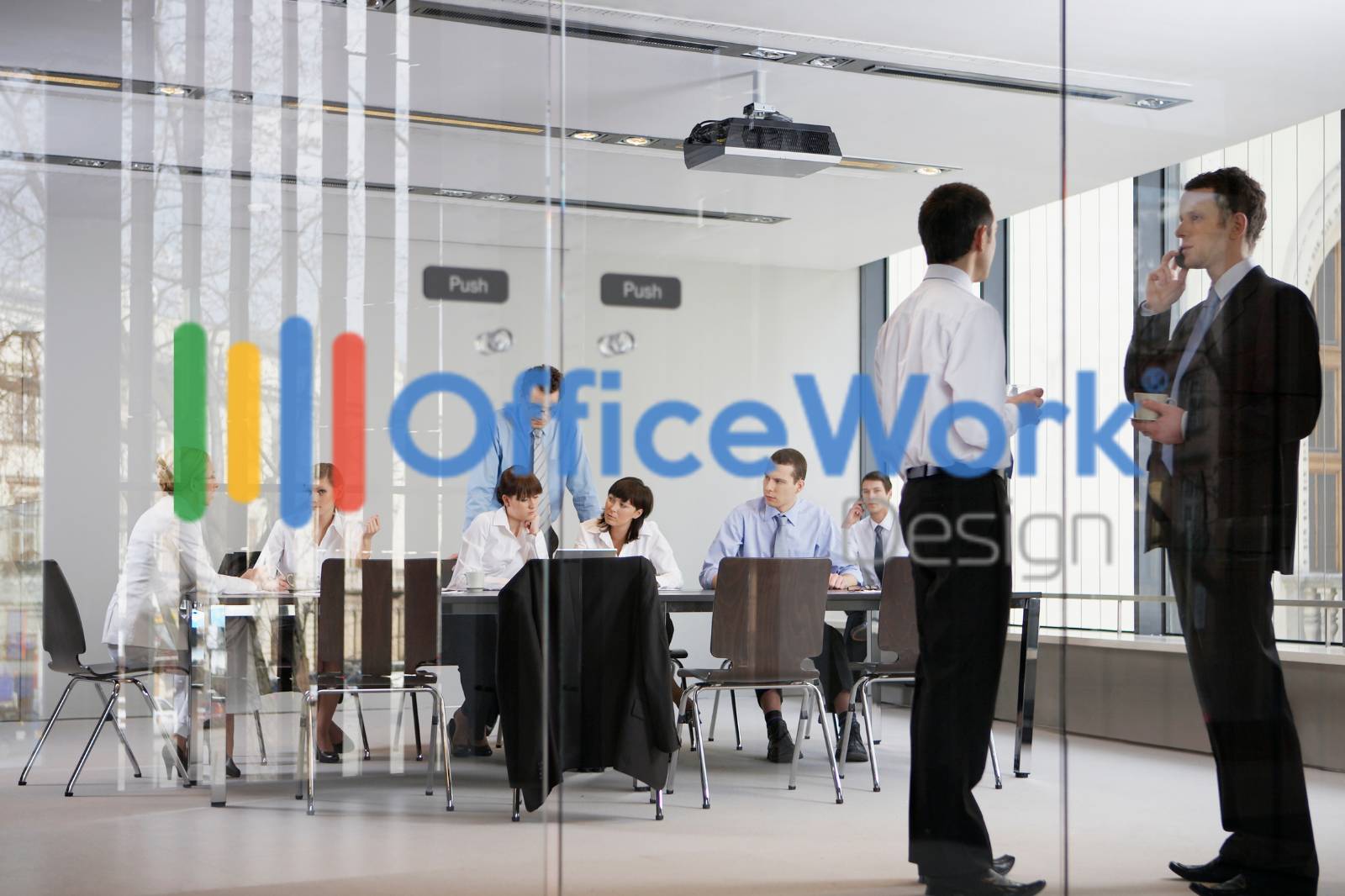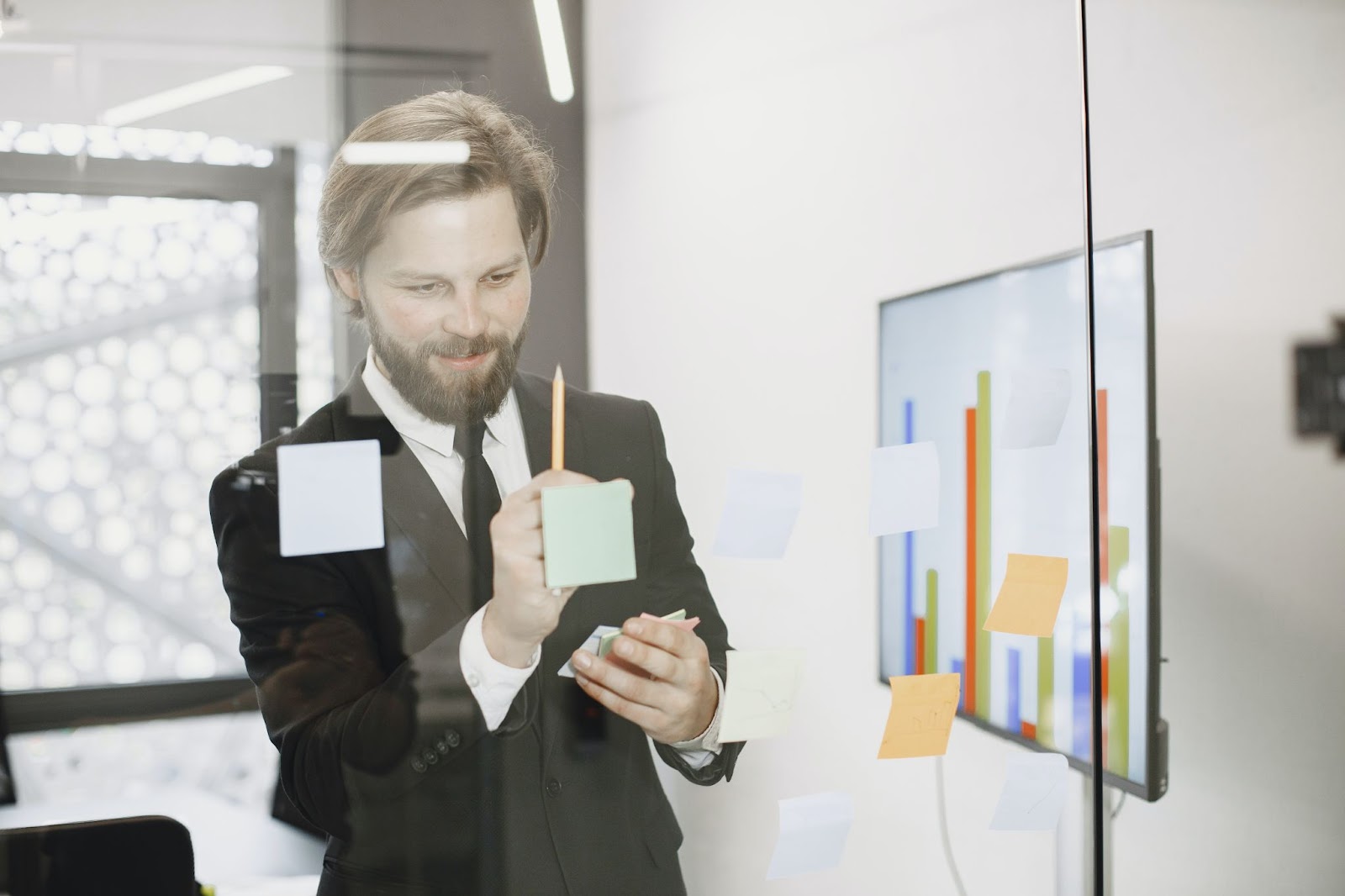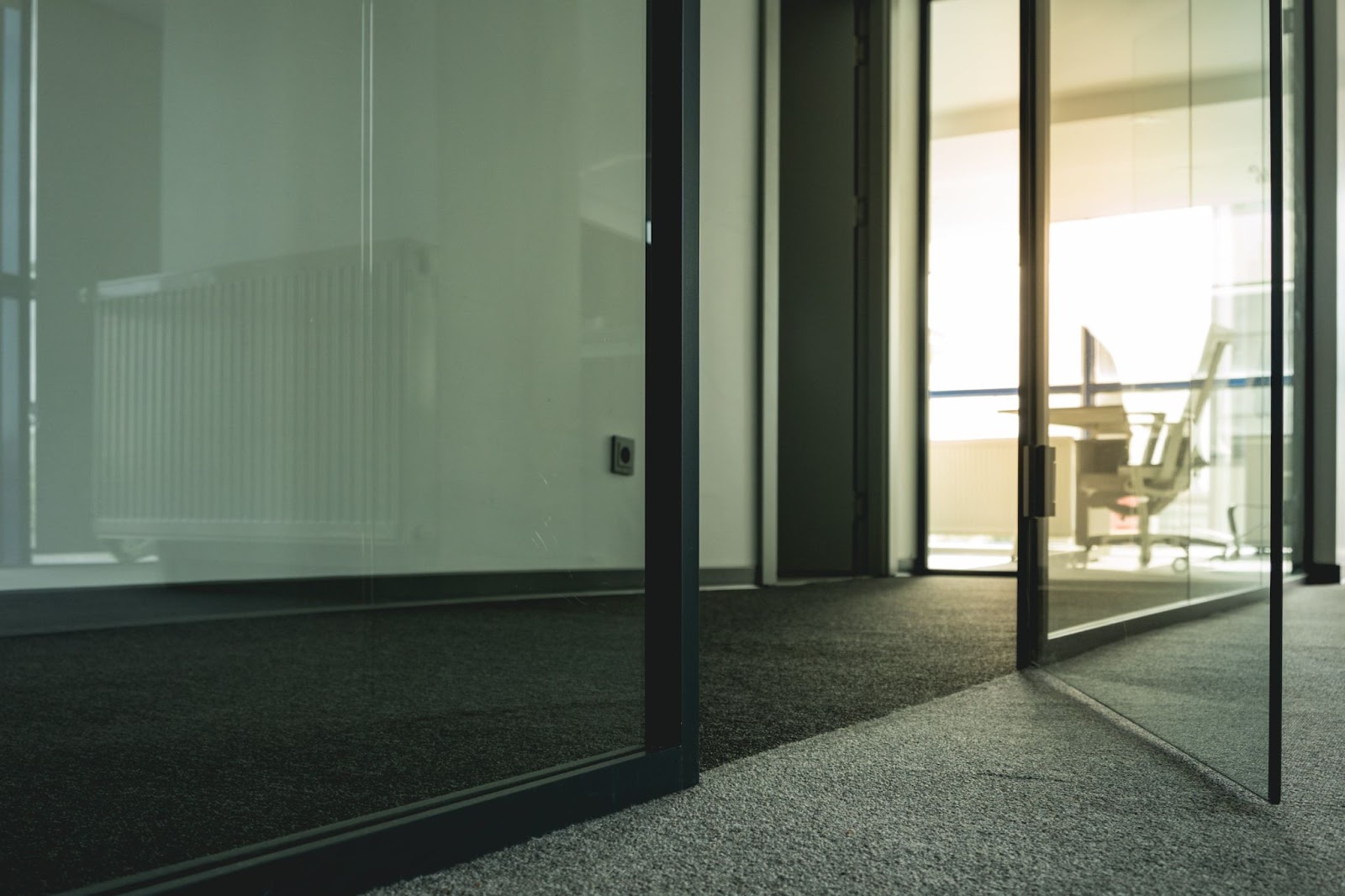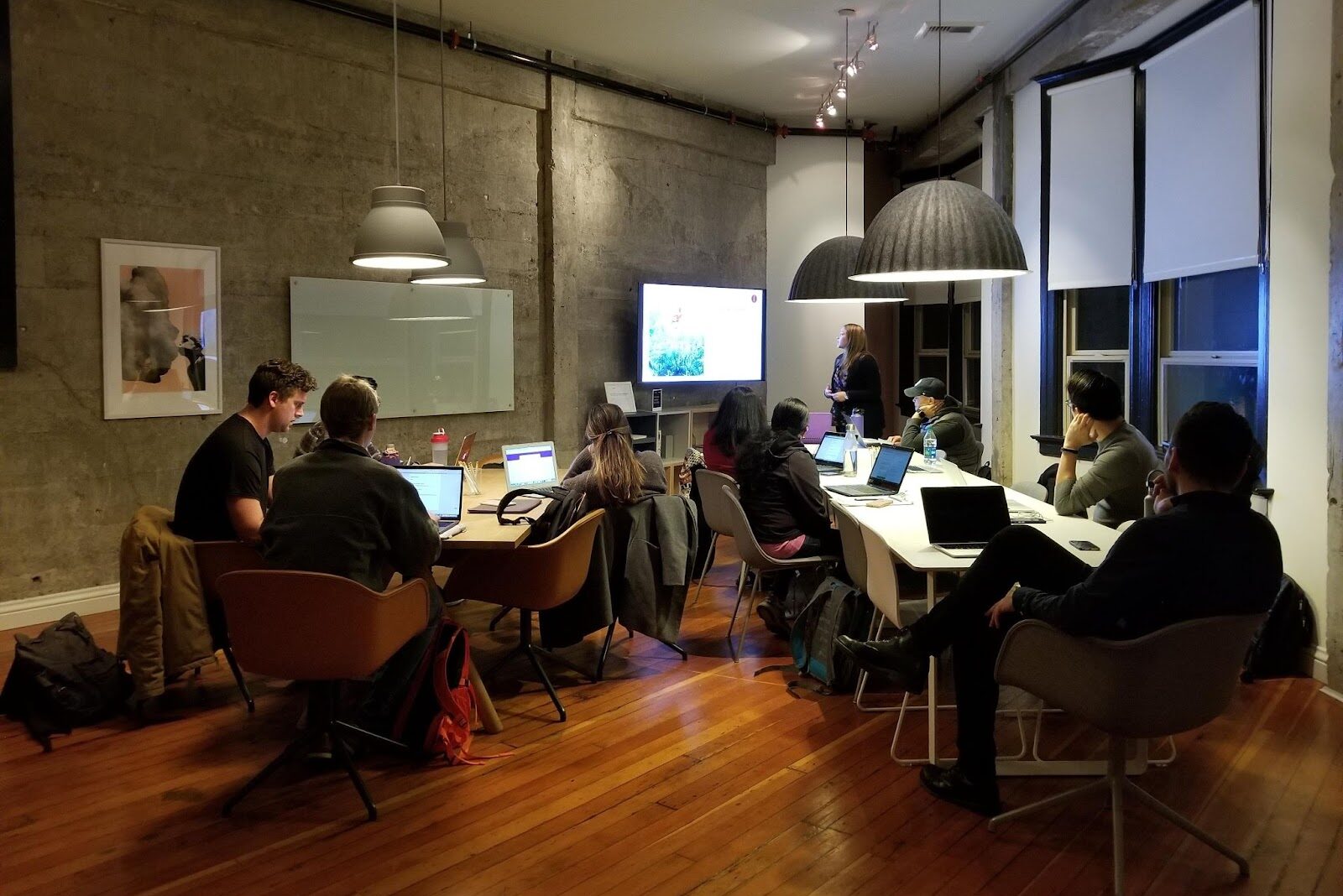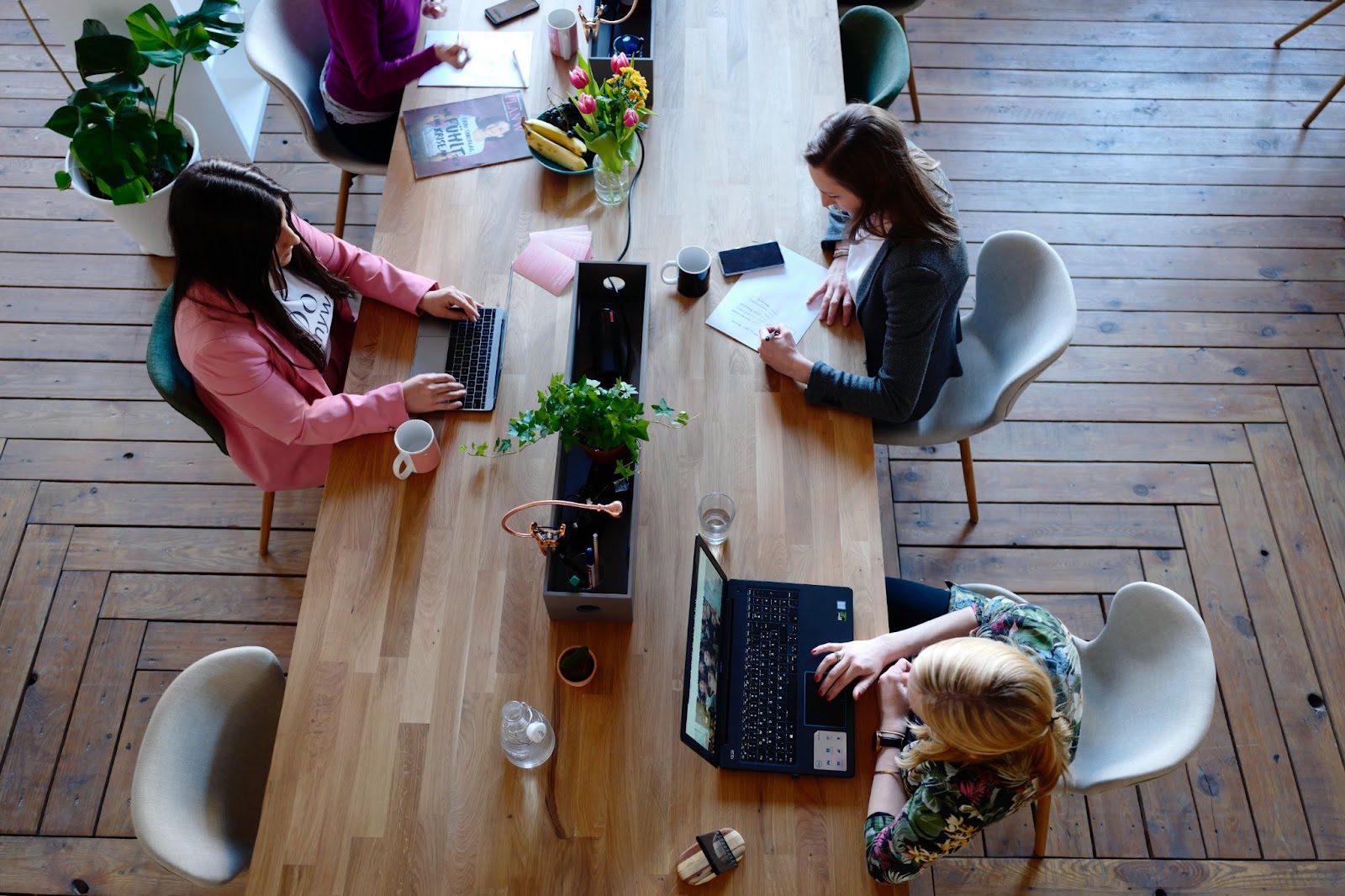Say goodbye to sterile, cubicle-filled offices and hello to a workspace that breathes! Biophilic design, the art of bringing nature indoors, is taking the corporate world by storm, and guess what? Your humble office partitions can be the unexpected heroes of this green revolution.
Photo by Dagmara Dombrovska: https://www.pexels.com/photo/decor-at-cafe-19366299/
But ditch the image of moss-covered walls and miniature waterfalls (though, those are cool too!). Let’s explore 5 surprising ways to weave nature’s magic into your office wall partitions, creating a more inspiring, productive, and well-being-boosting space for your team:
1. Sound of Serenity: Water features are often associated with biophilic design, but consider this: the gentle gurgle of a fountain can be drowned out by office chatter. Instead, turn your partitions into nature’s whisperers! Opt for sound-absorbing materials like cork or recycled felt, and incorporate subtle natural soundscapes like rustling leaves, chirping birds, or even the calming patter of rain. Trust us, your ears (and stress levels) will thank you.
2. Patterns of the Wild: Remember those geometric patterns on your office partitions? Swap them for organic wonders! Think textured wood panels mimicking tree bark, or etched lines that echo the flow of a river. These subtle nods to nature add visual interest and a sense of calm, reminding everyone that even amidst deadlines, the natural world exists and can inspire.
3. A Touch of the Forest: We all crave that tactile connection to nature, but indoor plants can be, well, finicky. So, think outside the pot! Use textured fabrics resembling leaves, incorporate woven bamboo accents, or even install climbing vines on your partitions. These tactile experiences not only add visual dimension but also satisfy that primal urge to touch and feel nature’s textures.
4. Light and Shadow Play: Let’s not forget the sun, the ultimate biophilic power source! Instead of harsh fluorescent lights, consider strategically placed light fixtures that mimic natural patterns. Think dappled sunlight through leaves or the warm glow of a sunset. This dynamic lighting not only creates a more inviting atmosphere but also helps regulate circadian rhythms, boosting energy and well-being.
5. Scents of the Season: Sure, you could hang diffuser reeds, but wouldn’t it be cooler if your partitions themselves whispered the scents of nature? Infuse natural resins or essential oils into partition materials, or create a subtle aromatherapy system that changes with the seasons. Imagine the invigorating scent of pine in winter or the calming lavender of summer. It’s a sensory experience your employees won’t forget.
Remember, biophilic design isn’t about creating a mini-jungle in your partitions for office. It’s about subtle touches, mindful connections, and weaving nature’s magic into the very fabric of your workspace. So, unleash your inner biophilic warrior, experiment, and get creative! Your office partitions are just waiting to transform into whispering ambassadors of the natural world, bringing a breath of fresh air and a touch of serenity to your team’s everyday experience. Now, go forth and biophilify!

